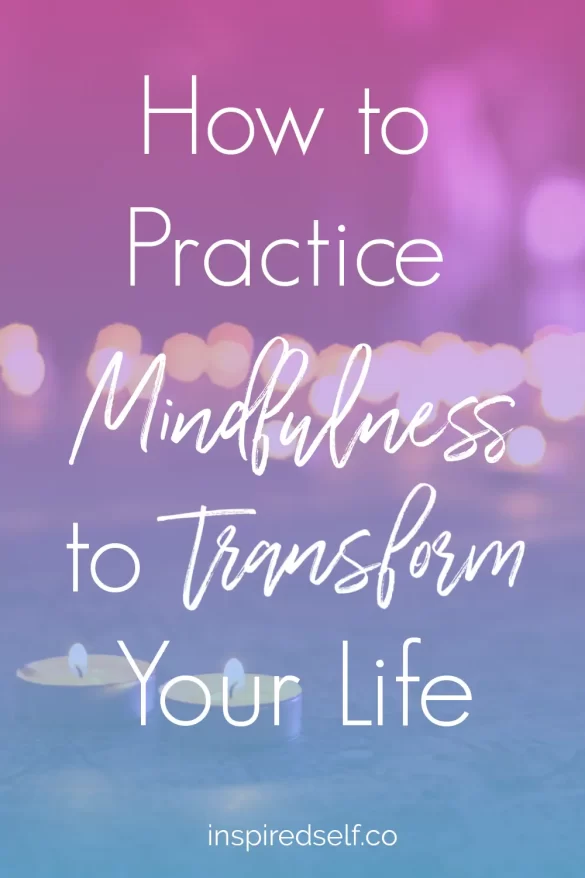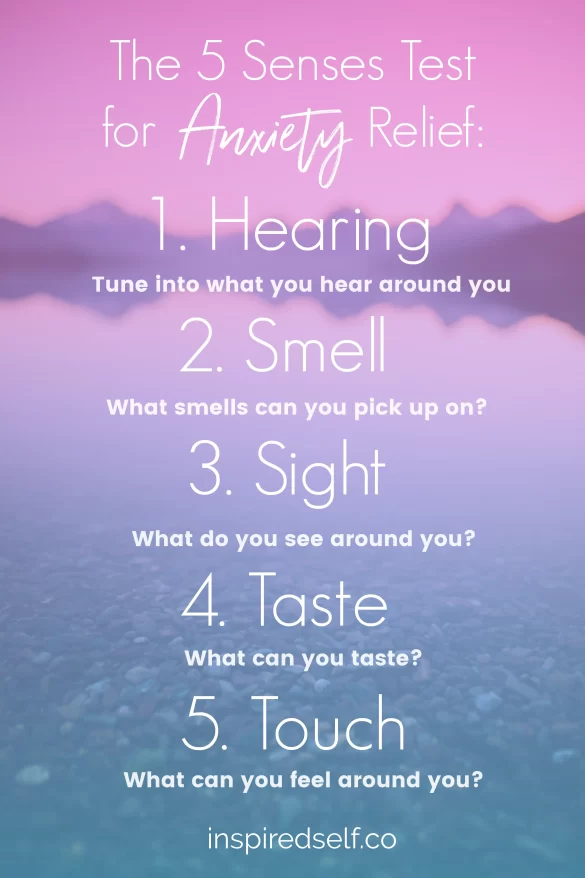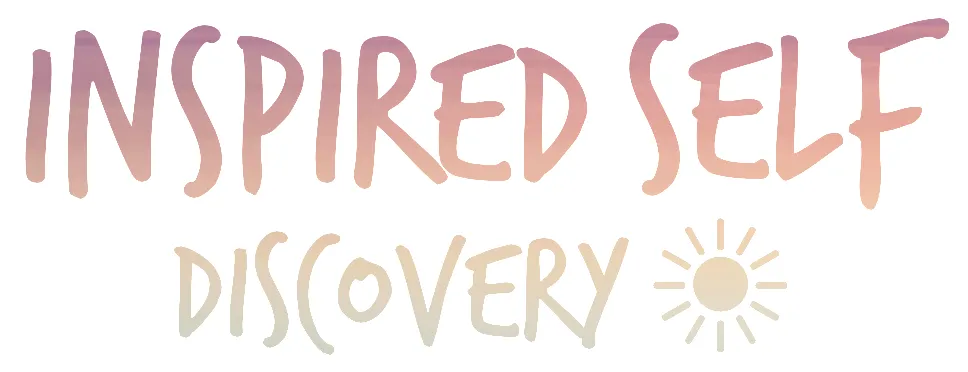Why Mindfulness Matters | Use Mindfulness To Transform Your Life
When investigating why mindfulness matters and how you can use it to transform your life, it’s important to remember that if we don’t practice mindfulness we’re at risk of being at the mercy of our monkey mind.
Stop what you’re doing right now and focus on the present moment. What do you see and hear around you? Are you tasting or smelling anything particular? Also pay attention to if you have any judgments in your mind about your current situation, for
Ta-da! You were just practicing mindfulness. You’ve already made progress toward a more mindful lifestyle. 😉
While it may seem like a few moments of refocusing can’t transform your life, it absolutely can and does when practiced regularly. Mindfulness is a powerful form of consciousness and a way of life that you can work toward daily to bring peace, emotional stability, sharpen your mind and even dissolve the fear of death.

Why Mindfulness Matters : What is Mindfulness?
Mindfulness simply means to be conscious and aware. When practicing mindfulness you’re focusing your awareness on your current experience – the here and now – while also acknowledging your thoughts and feelings for what they are without judgement.
A good percentage of our lives are spent focusing on the past or future instead of the current moment. Really all we have is now, so by bringing yourself back to the present, you’re committing to living life more fully one moment at a time.
The You Behind Your Thoughts
Another way to describe mindfulness is the awareness you use to observe your thoughts or focus your attention on any one specific thing.
“Rather than being your thoughts and emotions, be the awareness behind them.” — Eckhart Tolle, A New Earth.
Your consciousness, inner soul (or whatever you’d like to call it!) is the part of you that is able to acknowledge the things going on both in your head and in your environment. It can label thoughts as thoughts, images that pop into your mind as images, and it can also label the absence of thoughts when your mind is quiet.
The more you practice mindfulness and meditation, the more often you’ll be able to easily differentiate between 1.) this consciousness and 2.) your thoughts and emotions. Being able to separate yourself from your thoughts and emotions means less reacting and more peace.
Is Mindfulness the Same as Meditation?
Although mindfulness and meditation have similarities and overlap, they are two different things. You can practice mindfulness anytime anywhere and it’s more of a total mindset shift. Meditation is a practice that is typically done aside from other activities and for a specific amount of time.
For example, mindfulness can be practiced while you’re walking around the block, playing a game of soccer or talking with a friend, while meditation is typically done in a seated or standing position with full focus on the practice at hand. When you’re meditating, you’re also being mindful, but when you’re being mindful you aren’t necessarily meditating.
Why Mindfulness Matters: Top Benefits

Anxiety Reduction and Lowering Stress Levels
Mindfulness brings you back to the present and brings you out of a judgement state, which stops you from worrying about the future or ruminating about the past. At first mindfulness will be an intentional practice, but soon you’ll start coming back to the present automatically and more easily. This leads you to spend much more of your life in a joyful, present state as opposed to an anxious state.
You’ll find that being mindful provides an instant sense of calm, especially if you were focused on something uncomfortable prior.
I remember being on vacation a few years ago and practicing mindfulness without knowing what it was. Something bad had happened that was upsetting for everyone on the cruise ship I was on, both from a traumatic experience POV and simply that we had spent a lot of money and time planning the vacation to have something bad happen. I remember being so anxious and then saying to myself “just focus on right now and what you’re doing, that doesn’t feel so bad now right”? It made me feel so much better being in that headspace, and I used it for the remainder of the trip to feel better and avoid panic.
Bringing yourself back to the present moment, taking away the stresses of the past and future provides a calming space for you to come back to.
Why Mindfulness Matters – What Can Practicing Mindfulness Do For You?
Living mindfully brings you more emotional
Practicing mindfulness also stops you from forming negative beliefs that aren’t necessarily true. We all go around making judgements, not because we’re bad people, but because our brain is trying to make sense of the world, and we are better off without these judgements, as they are only assumptions and not the truth. Keeping an open mind is important for a peaceful, happy life and fulfilling your purpose.
Mindfulness can also protect against developing certain anxieties and depression, and can help with current conditions as well. This is because it stops harmful thought patterns in their tracks.
How to Practice Mindfulness
Being mindful can feel weird at first and be fairly difficult, just like meditation or trying anything that puts you outside of your daily, normal waking reality. A recent study at Harvard found that people are thinking about things other than what they’re doing 46.9% of the time.
The first step to living a mindful lifestyle or getting started with mindfulness is to make the decision you want to. You have to be intentional with it just like if you were to learn to meditate or make any other shift in consciousness.
Once you’ve made the decision you should try to practice mindfulness daily in one way or another throughout your day. The more often you’re able to bring yourself into a mindful state, the faster these thought patterns will stick and come up automatically and the faster you’ll reap the benefits.
Here are some exercises and tips for how to bring mindfulness into your daily life:
Mindfulness Exercises and Tips

-The five senses exercise, which we practiced in the beginning of this blog post): Slow down and look at the world around you. What do you see, smell, hear, taste, and touch?
-Check in with your thoughts and see if you’re making any judgements, ruminating about past experiences or worrying about the future. If so, relax and bring yourself back to the here and now. Bring yourself to a loving space of gratitude.
-Take a few seconds or minutes to just focus on your breath. This can either be a full meditation or just a few seconds here and there throughout your day.
-Recognize that your thoughts are just thoughts. You are the awareness behind those thoughts.
-As often as you can remember during the day, relax any tension you’re holding in your shoulders, jaw, or anywhere else in your body.
-Be completely present in social interactions, including hugs and handshakes. No one likes someone that feels distant although we’re all guilty of it.
-Clearing things you don’t need from your life, aka limiting clutter and creating space for growth, will help you in moving toward a mindful lifestyle. Taking the time to notice and shift your mindset requires time and patience. Take a look at my job on how to move toward a peaceful and simple lifestyle here and on my blog on minimalism.
-As you’re falling asleep think of what you’re grateful for and focus on your breath to get you into a relaxed state for a good night’s sleep.
If you have experience with mindfulness, please leave me a comment with tips and exercises that have worked for you or any questions you have! I’d love to hear from you! Namaste 🙂
If you liked this post, sign up for my newsletter below for resources to support your yoga practice and personal transformation, sent straight to your inbox!


Lauren Kessel is the author and owner of the Inspired Self Discovery blog. She is passionate about supporting personal growth and transformation in her life and others through yoga, mindfulness, spirituality and personal development. Lauren has been writing for over 15 years, practicing yoga for even longer, and has always had an interest in inner work.





No Comments